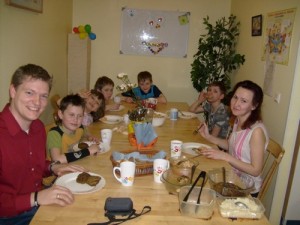Family Life in Russia
Family life in Russia has long been viewed as not only important, but vital for survival and support. Family life, for centuries, has been at the forefront of Russian life and culture. Even today, many families live in smaller dwellings with two to three generations sharing the space there. Women take traditional roles, but are usually required to work outside of the home to help the family financially. In their traditional roles, women are solely responsible for the household and raising the children. Under the communist regimes, women were actually encouraged to train in and occupy typical male-dominated labor positions. Women began to work in agriculture, construction, and in constructing and maintaining infrastructure (roadways and railways). Additionally, women were encouraged to work in the day care and nurse fields in order to ‘free’ them from the task of raising children. However, while the woman was now ‘free’ to work outside the home, the main responsibility of maintaining the home still fell on to the woman. Because of the proliferation of women in the workforce, a number of normally male-dominated fields (medicine, education, and the like) grew the number of women working in those fields. With the unemployment trend beginning in the 1990’s, however, the first workers to be cleared from the workplace were women.
While marriages emphasize the importance of the nuclear family, housing shortages and the high cost of housing force families to maintain the multi-generational family. Often, a grandparent living with a family will help to raise the children and cook meals. Generally speaking, close ties are maintained even between extended family members. One of the greatest contributing factors for the bond between relatives is that people have generally been unable to travel far distances, due to the geographic inhibitors. In order to maintain a network of family support and also financial support, the ties between family members has endured.
The birth rate in Russia is about 12 births per thousand people (estimated in 2009). The population density is just 8 people per square mile. With the size of the total land area, Russia is one of the most sparsely populated nations in the world. Children are born in a less ‘modern’ style than has been fashioned in the United States. Birthing traditions in Russia include the father staying out of the birthing room, and viewing their children through a glass window. It is still feared that outside contact with other people, including fathers, will bring germs to the infant. Some people still address babies as if they are able to understand dialogue, and frown upon normal baby behavior, including crying and grabbing.


